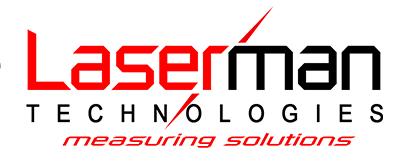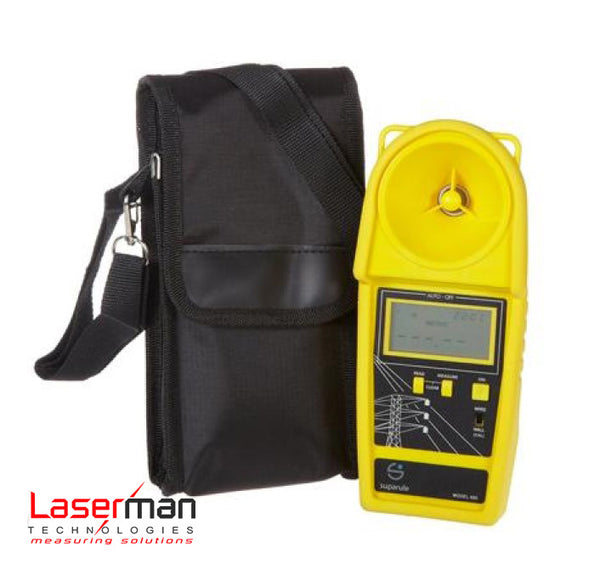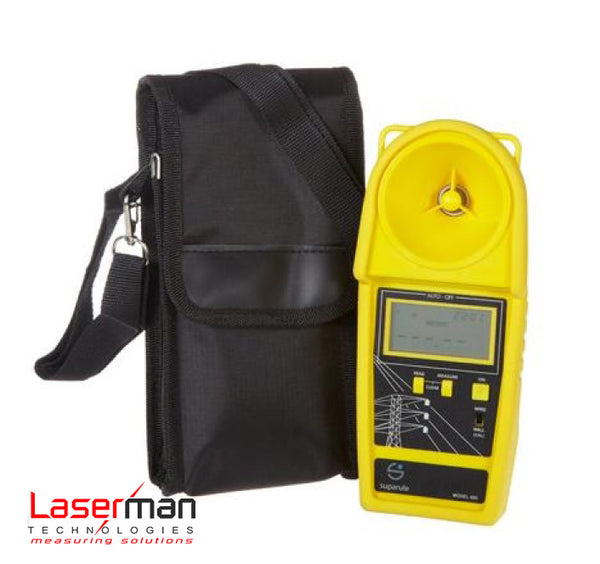FAQ's
What are some common problems that people have with
-
What are the different types of laser levels?
There are two main types of laser levels: self-leveling and non-self-leveling. Self-leveling laser levels automatically adjust to level the laser line, while non-self-leveling laser levels need to be manually leveled.
-
What is the difference between a rotary laser level and a line laser level?
A rotary laser level projects a rotating laser line around a room, while a line laser level projects a single laser line. Rotary laser levels are typically used for large outdoor projects, such as leveling land or pouring concrete. Line laser levels are typically used for smaller indoor projects, such as hanging pictures or installing shelves.
-
What is the best laser level for me?
The best laser level for you will depend on your specific needs and budget. If you are only going to use a laser level occasionally, a non-self-leveling line laser level may be sufficient. However, if you are going to use a laser level frequently, or if you need to level large objects or outdoor areas, a self-leveling rotary laser level is a better choice.
-
What is the difference between a laser distance meter and a laser measuring tape?
A laser distance meter is a more accurate and versatile tool than a laser measuring tape. Laser distance meters can measure distances of up to 100 meters or more, while laser measuring tapes are typically limited to measuring distances of up to 10 meters. Additionally, laser distance meters can be used to measure distances to objects that are difficult or impossible to reach with a measuring tape, such as ceilings or high shelves.
-
What is the best laser measuring tool for me?
The best laser measuring tool for you will depend on your specific needs and budget. If you only need to measure distances occasionally, a basic laser distance meter may be sufficient. However, if you need to measure distances frequently, or if you need to measure long distances or objects that are difficult to reach, a more advanced laser distance meter or a laser level with measuring functionality is a better choice.
-
How do I use a laser level?
To use a laser level, first turn it on and place it on a level surface. If you are using a self-leveling laser level, wait for the laser line to level itself. Once the laser line is level, you can use it to level and plumb objects.
-
What are some safety tips for using laser levels and laser measuring tools?
Here are some safety tips for using laser levels and laser measuring tools:
- Do not look directly into the laser beam.
- Do not point the laser beam at people or animals.
- Be aware of your surroundings and avoid pointing the laser beam at reflective surfaces, such as mirrors or windows.
- Turn off the laser level or laser measuring tool when you are not using it.
-
What are the benefits of using a laser level?
Laser levels offer a number of benefits, including:
- Accuracy: Laser levels are very accurate, with most models offering an accuracy of +/- 1/8 inch over 100 feet.
- Speed: Laser levels can help users to quickly and easily level surfaces, which can save time and effort.
- Ease of use: Laser levels are easy to use, even for beginners.
Laser Safety FAQ’s
-
General notes on safety
Safety instructions serve the purpose of occupational safety and accident prevention. They must be observed. In order to protect you and your colleagues from damage, your cooperation is also necessary. You should therefore always work with caution and be aware that dangers are usually not obvious.
In order to ensure safe operation, the operator must ensure that the persons working on or with the device have been informed of the possible dangers of laser radiation. The accident prevention regulations and the associated manual must be made accessible at a suitable location (BGV A1, Chapter 2, § 12).
The command and warning symbols that apply and are used for the application of the respective manual are based on the statutory safety and health protection labelling at the workplace, BGV A 8: -
Safety instructions for electronics
The following safety instructions are based on the statutory accident prevention regulations for electrical systems and equipment.

According to BGV A3, § 3, the entrepreneur must ensure that “electrical systems and equipment are only installed, modified and maintained by a qualified electrician or under the direction and supervision of a qualified electrician in accordance with the electrical engineering regulations”. (DIN VDE 0105)
The contractor must also ensure that the electrical systems and equipment are operated in accordance with the electrotechnical regulations.
According to BGV A3, § 6, work must not be carried out on live active parts of electrical systems and equipment.
It states: “Before starting work on active parts of electrical systems and equipment, the voltage-free state must be established and ensured for the duration of the work. The operator may only commission persons who are “technically suitable” for work on live active parts. (DIN VDE 0105)
In the event of faults in the electrical power supply, the device must be switched off immediately.
The laser projector contains highly sensitive components that are electrostatically sensitive. Do not attempt to repair the projector yourself. Take measures against static discharges and electric fields according to DIN EN 61340 – 5 -1 or VDE 0300 – 5 – 1. -
Safety instructions for lasers
If the laser beam from class 2 or higher laser equipment is directed at work or traffic areas, the employer must ensure that the laser area is clearly identifiable and permanently marked in accordance with the statutory provisions.

No mirrors should be installed in the area of the laser beam to exclude dangerous reflections. Avoid direct eye contact and never look into the laser beam with optical instruments! Close your eyes and turn away immediately if the laser beam hits your eyes.
Check which laser class your device is assigned to. The laser class can be found on the nameplate on your device. -
Laser Class 1 Safety Precaution
The accessible laser radiation is harmless under foreseeable conditions. The foreseeable conditions are met during normal operation.

The limit value of the accessible radiation according to DIN EN 60825-1:2001-11 in the wavelength range from 400 nm to 1400 nm for the classification of a laser is the same between 100 s and 30000 s. The maximum permissible radiation is between 100 s and 30000 s. The maximum permissible radiation is between 100 s and 30000 s. -
Laser Class 1M Safety Precaution
The accessible laser radiation lies in the wavelength range from 302.5 nm to 4 000 nm. The accessible laser radiation is harmless to the eye as long as the cross-section is not reduced by optical instruments (magnifying glasses, lenses, telescopes)!

Unless optically collecting instruments are used to reduce the beam cross section, Class 1M laser devices present a comparable hazard to Class 1 laser devices.
When optically collecting instruments are used, hazards comparable to those of Class 3R or 3B may occur. -
Laser Class 2 Safety Precaution
The accessible laser radiation is only in the visible spectral range (400 nm to 700 nm). It is harmless to the eye for a short exposure time (up to 0.25 s). The eye is protected by the eyelid closure reflex when looking into the laser radiation for a short time. For continuous beam lasers of class 2, the limit value of accessible radiation (GZS) is 1 mW (for C6 equals 1).

Class 2 laser devices may be used without further protective measures, provided that it is ensured that it is neither possible to look into the laser radiation intentionally for longer than 0.25 s nor to look repeatedly into the laser radiation or directly reflected laser radiation.
In the case of Class 2 laser equipment, there is generally no laser area requiring additional safety measures if the operation of such laser equipment allows only accidental irradiation of persons. -
Laser Class 2M Safety Precaution
The accessible laser radiation lies only in the visible spectral range (400 nm to 700 nm). It is harmless to the eye when irradiated for a short time (up to 0.25 s), which is protected by the eyelid closure reflex when it looks into the laser radiation at random for a short time. For class 2M continuously radiating lasers, the limit value of the accessible radiation (GZS) is 1 mW.

Class 2M laser equipment may be used without further protective measures if it is ensured that it cannot be intentionally looked into for longer than 0.25 s or repeatedly looked into the laser radiation or directly reflected laser radiation. In addition, it must be ensured that no optically collecting instruments are used in the projection area.
Class 2M laser devices generally do not have an additional laser area to be secured if only random irradiation of persons is possible during operation of these laser devices and no optically collecting instruments are used. -
Laser Class 3R Safety Precaution
Laser class 3R devices are potentially dangerous to the eyes. The risk of eye damage is reduced by the maximum accessible radiation (GZS) limit:

- 5 times the limit value of laser class 2 in the visible wavelength range
- 5 times the limit value of laser class 1 in the remaining wavelength range
Accidental reflections must be avoided. A laser safety officer is not required for systems that emit laser light in the visible range. Beam displays, interlock and key switches are also not required in the visible wavelength range. No special requirements regarding eye protection devices and protective clothing are required. Operating and maintenance personnel must be trained in the use of laser equipment. -
Laser Class 3B Safety Precaution
The laser class 3B is dangerous for the eyes and potentially also for the skin. Persons must not be exposed to the laser beam. Diffusely scattered laser radiation is not dangerous as long as the viewing distance of 13 cm and a viewing duration of less than 10 s are guaranteed. There is a risk of fire if the laser beam comes into contact with flammable materials.

The maximum output power is 500 mW. When setting up and working within the working area of the laser beam, suitable protective clothing, laser goggles and gloves must be worn. The working area of the laser beam must be marked with suitable warning signs.
Laser equipment must be protected against unauthorized use. An additional visual warning lamp “Laser in operation” must be used to indicate when the laser is switched on. The warning lamp must also be clearly visible from a greater distance. The laser beam must not scatter out of the intended working area. There must be no reflective surfaces in the working area.
Before the laser is put into operation for the first time, a laser safety officer must be appointed and registered. Courses for laser safety officers are offered in Germany by TÜV, Berufsgenossenschaften or similar institutions.
Laser warning sticker class 3B
Further information on the definition of laser classes -
Laser Class 4 Safety Precaution
The accessible laser radiation is very dangerous for the eye and dangerous for the skin. Even diffuse scattered radiation can be dangerous. The laser radiation can cause fire and explosion hazard.

The accessible laser radiation is very dangerous for the eye and dangerous for the skin. Even diffuse scattered radiation can be dangerous. The laser radiation can cause fire and explosion hazard.
Note: Class 4 laser devices are high-power lasers whose output powers or energies exceed the accessible radiation limits (AWR) for Class 3B.
The laser radiation from Class 4 laser equipment is so intense that damage is to be expected from any type of exposure of the eyes or skin. If necessary, secure access to the room through sluices or door contacts (laser shut down) if the degree of danger so requires.
In addition, when using Class 4 laser equipment, it must always be checked whether sufficient measures have been taken against fire and explosion hazards; see also § 10 Laser radiation (previously: BGV B2) and § 16 Laser radiation (previously: BGV B2) of the accident prevention regulation Laser radiation. -
Warning sign W10
The requirement for labelling is fulfilled if the warning sign W 10 "Warning of laser beam" with the corresponding additional sign according to Annex 2 of the UVV safety and health protection labelling is affixed at the workplace.
According to BGV B 2, § 8, the operator must take technical or organisational measures to ensure that irradiation above the maximum permissible level, including reflected or scattered laser radiation, is prevented. Laser radiation emitted by class 2, 3 A, 3 B or 4 laser equipment may only extend to the extent necessary for the type of application. As far as possible, the beam shall be limited at the end of the useful distance by a diffusely reflecting target surface in such a way that the risk of direct or diffuse reflection is as low as possible.
As far as possible, the unshielded laser beam should run outside the working and traffic area in an area that is as small as possible and not easily accessible, especially above or below eye level.
To protect against dangerous reflections, tools, accessories and adjustment devices used in the laser area should not have any well reflecting surfaces and those present in the laser area should not visibly carry any well reflecting objects with them. Optical components should be fixed or non-rotatable in order to keep the beam in a predetermined, very narrow solid angle (the "beam path"). Mirrors must not be brought into the beam path, which can also cause dangerous reflections.
Suitable eye protection devices which comply with the DIN EN 207 standard offer protection against direct, specularly reflected or diffusely scattered laser radiation. Despite eye protection devices, however, the direct beam must not be viewed.





